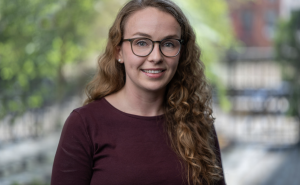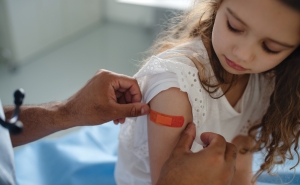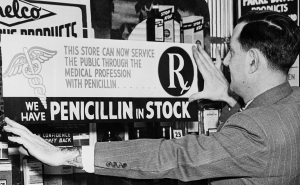Encouraging Early Results From Pfizer’s COVID-19 Vaccine and What Might Happen Next

AN INTERVIEW WITH JOSH SHARFSTEIN, MD
We must continue vigilance with masks, distancing, and hand washing while waiting for widespread vaccination to bring the pandemic to heel.
This week, Pfizer reported some encouraging early results from Phase 3 of its COVID-19 vaccine clinical trials. On a bonus episode of the podcast, Josh Sharfstein talks with Stephanie Desmon about what might happen next, and what we should do in the meantime.
Today, we want to talk about this week’s really encouraging news from Pfizer about a vaccine. Can you tell us about the news?
Pfizer reported some of the results from its big vaccine study. With about 46,000 patients, they found that people in the group that got the vaccine were 90% less likely to get COVID-19 than the people who got [a] placebo. That’s a really strong showing of efficacy.
So, where do we go from here? This is still early, right?
The company said that it needed to collect a few more weeks of safety data and then it would bring that data in the form of an application to the Food and Drug Administration.
From there, the FDA reviews the data, convenes an independent advisory committee to provide some input, and then makes a decision on making it available to groups in the United States.
How long could this process take?
This process will probably be measured in weeks.
So, we could have a vaccine made available by the end of the year?
Definitely, I think that’s possible.
If the data continue to look good, how does the FDA go about making the vaccine available?
The FDA has a few options. The traditional route is full licensure, otherwise known as approval. It’s probably less likely in the short term, because there are a number of steps associated with licensure and approval that take time and would probably take too long in this situation.
The other option is Emergency Use Authorization, which is a tool that the FDA has in a declared emergency like the pandemic to make medical products like vaccines available.
It’s also possible that the agency could use what’s called an Expanded Access Protocol, which basically considers the vaccine still “investigational.”
I think the choice that the FDA makes will depend in part on the strength of the evidence. As the agency and the advisory committee are looking at the data, they’ll have a sense of whether they’re ready to go for an EUA or whether to have an interim step, which might be, essentially, a broad protocol for certain groups of people to have access to the vaccine.
Can you tell us a little bit about this vaccine? It’s a little unusual because it’s made from RNA. There hasn’t been a vaccine made this way before.
Typical vaccines are often a version of the virus, but weakened—the inactivated polio vaccine, for example. But this vaccine is just RNA, a piece of the whole virus. This piece of RNA gets into your own cells and makes the protein that teaches the immune system to recognize and eventually kill SARS-CoV-2 when you’re exposed to the real virus.
Is the idea that it would be more effective this way?
It’s a way to make a vaccine pretty quickly, and hopefully it will be quite effective. That’s what the early results show.
There have not been approved vaccines with this technology, so we’re just learning about how effective it is.
If this vaccine is approved and it’s successful, could we see RNA vaccines for other diseases in the future?
I think that’s quite possible. I think this is very exciting, and one of the other aspects of it is that it’s very fast. Usually, vaccine development takes many years. They started working on this as soon as the genetic code of the virus was known because, essentially, they figured out which protein to target and then they made the RNA that corresponds to that protein.
So, all the promises that this would come quickly are starting to come true?
It’s pretty fast and I think you’re right, they’re starting to come true, and we just hope that everything proceeds according to plan.
This doesn’t necessarily mean that the Pfizer vaccine will be the only vaccine, right?
Correct. The other vaccines that are in late-stage clinical trials are also targeting the same protein of the virus—in slightly different ways, in some cases. If targeting that protein causes a good set of immune protections for the individual, then that hopefully is very promising for the other vaccines as well.
How might this work? We need several vaccines to be approved in order to have enough to vaccinate everybody. Will these other clinical trials continue?
From the standpoint of humanity, we really need at least one really good vaccine, and then we could all work to make it available to everybody as quickly as we can.
The hope, though, is that there will be more than one because some vaccines may work better in certain populations than others. For this issue of production, each of the companies that are making vaccines is also developing an early effort to produce a number of doses, and so the more of those that are good vaccines, the faster we’ll have more doses. So, I think it’s more a question of speed.
There are still questions about how this—or any vaccine—would be distributed. Do we know any more about those efforts?
There are a few different dimensions in the challenge of distribution. One of them is that this vaccine has to be kept very, very cold during most of its passage through the distribution system because it’s an RNA vaccine.
The issue you’re raising is who gets the vaccine. Once the FDA moves forward on a vaccine, the Centers for Disease Control convenes a committee that looks at the evidence about the vaccine, then considers all kinds of advice it’s gotten, including from the National Academies of Science, Engineering, and Medicine, and then makes a plan for the highest-risk groups to get vaccinated.
We expect that that plan will include health care workers and potentially other essential employees, as well as people who are at very high risk for serious illness and death like those who are very old or have a serious condition and are predisposed to a bad course of COVID-19.
The plan will depend on what the data show. For example, they’re going to look at the data to see the response in older adults and, if that response is strong in older adults, then it’s very likely that older adults will be some part of that high-risk group recommended.
Do we have any hints about when this will become widely distributed—not necessarily this vaccine, but a vaccine?
Generally, the timeline is enough vaccine for a lot of people in high-risk groups by the beginning of 2021. And then, it will be into 2021—maybe the summer or the fall—where there’s vaccine everywhere for everyone. That is the hope, if all of these trials prove that the vaccines are ready.
Are you optimistic?
Absolutely. A lot of the initial data showed that a vaccine can help people get antibodies. That was known. On that basis, some countries started to make vaccines available—just on the basis of antibodies.
But, in the United States, we said we wanted to make sure that it’s actually effective in protecting people from COVID-19, and that’s what this study appears to show. So, that’s a big step. It’s not every step, but it’s a big step.
We’ve had huge increases in the number of cases in the last week—we’re seeing over 100,000–120,000 new cases a day. I’m wondering if having more of the disease around is somewhat helpful when you’re developing a vaccine?
The main issue there is that it’s a very serious situation with the coronavirus in the United States right now. Not only are cases going up, but hospitalizations are going up and deaths are going up. In some places, there’s not enough room in the hospital for patients, and they’re building extra hospitals. We really, as a country, need to come together and commit ourselves to keeping vigilant against the virus and saving as many lives as possible.
The idea of the vaccine reinforces that we’re not stuck in this situation forever. If we can come together, if we can wear masks and distance and wash our hands and do the things that we need to do, then we deny the chance for the virus to kill a lot of people while we’re setting up for a vaccine, which really provides a way, over time, to end the pandemic.
It’s a very serious situation, and there are a lot of people who are understandably quite worried that they’re going to be at risk or their families will be at risk. And that’s balanced against the fatigue people have about “How long do I have to go around wearing a mask?” and “How long do I have to stay away from my friends and big indoor parties?” and the answer is—a little while longer. Science is coming to the rescue here and we have to just give it the time that it needs.
Talk to me about the global situation. China and Russia have vaccines of some sort that they are distributing. What do we know about those vaccines, and how might they compare to this Pfizer vaccine?
I’m not aware that those vaccines have this kind of evidence—evidence of actually preventing disease. I think another aspect of the global situation is, how do we make sure that countries around the world have access to safe and effective vaccines as they become available, and that’s another issue that will be playing out over the next several months, I think.
How are those decisions made?
There’s no one decision point. Countries are coming together to share vaccines with other countries. Companies are making commitments to make vaccines available to, for example, low-income countries. But, it’s hard to know exactly how it’s all going to play out because we don’t know which of the vaccines that are in development are going to be ready to go. As that comes into focus, there will be opportunities to make sure that vaccines are able to be distributed around the world.
In a pandemic, it doesn’t really make sense just for your own country to be protected. We have to protect the United States—we have the worst outbreak. At the same time, just focusing on the United States—just having that as your entire frame of reference—means we’re not going to be safe as long as there are other countries in the world that have serious outbreaks. So, it’s in all of our interests to defeat the virus.
Joshua Sharfstein, MD, is the vice dean for Public Health Practice and Community Engagement and a professor in Health Policy and Management. He is also the director of the Bloomberg American Health Initiative and a host of the Public Health On Call podcast.





